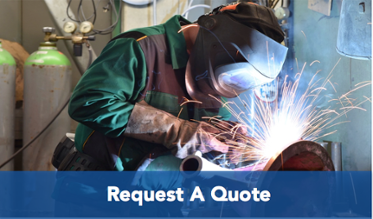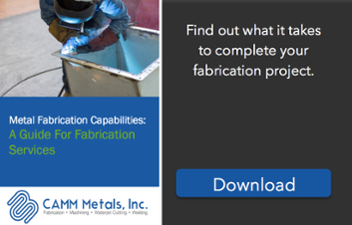.jpg?width=512&name=Depositphotos_3535975_m-2015(1).jpg) Are metal welding costs draining your fabrication project’s budget? It’s possible that your fabrication partner isn’t doing everything possible to optimize their welding processes and find ways to minimize your expenses. It’s a difficult balancing act. After all, the end product’s structure and safety is dependent on the strength of the welds. Any welding defects will result in additional costs for your business. Check in with your metal fabrication partner to find out if they offer any of the following welding solutions to drive down your project costs (without sacrificing quality).
Are metal welding costs draining your fabrication project’s budget? It’s possible that your fabrication partner isn’t doing everything possible to optimize their welding processes and find ways to minimize your expenses. It’s a difficult balancing act. After all, the end product’s structure and safety is dependent on the strength of the welds. Any welding defects will result in additional costs for your business. Check in with your metal fabrication partner to find out if they offer any of the following welding solutions to drive down your project costs (without sacrificing quality).
Eliminating Unnecessary Welds from the Design
It’s important to work with a welding contractor who you can trust to look for ways to modify product designs to eliminate unnecessary welds. For instance, if one company that manufactures boxes originally has a design that calls for welded lift handles on each side of the box, the welding partner could save money by simply changing the design of the box to cut out lifting slots, eliminating the need for welding the handles.
Essentially, there are many instances where a professional welder will be able to recognize the opportunity to eliminate unnecessary welds from the design, saving time and money down the road.
Optimize Welding With Other Fabrication Processes
It’s not surprising— OEMS typically use welding contractors for more than welding services alone. Typically, it’s fair to expect your metal manufacturer to supply material and fabrications as well. It’s common for OEMs to request specialty welding, machining and painting services grouped together as one project.
Ideally, suppliers must use their specialized knowledge to streamline welding with other manufacturing services. For instance, we work on many projects where a part may need post-weld machining using a large piece of equipment. In cases like that, it’s important that the project is optimized to save time. If the feature that needs to be machined is small, your supplier may opt to machine the component on a smaller, less expensive machine before welding. However, it must be pre-machined in a way that compensates for how welding will change and distort the part.
You save money by using less expensive machining equipment if your welding contractor’s plan is successful.
Understand the Nuances and Science of Welding
Welding is a balance of art and science. As you may know, the order in which your fabrication partner applies welds affects the quality of your completed parts. Heating a metal causes it to move, shrink and distort. If your supplier controls the distortion, it controls how your finished part comes out.
Believe it or not, suppliers can actually assemble components improperly, knowing that the welding process will inevitably change certain features, and end up with a correct assembly. In other words, if a professional welder understands that something is going to move an inch after welding, he or she can compensate by moving it an inch the opposite way prior to welding.
Essentially, if you work with a professional welding supplier with years of expertise, you are more likely to receive higher-quality parts and fewer welding defects that would otherwise slow down your production line.
Minimize Welding Equipment Downtime
Wasted time costs money for both you and your fabrication partner. The two most effective methods for a welding contractor to reduce welding equipment downtime is to use the appropriate filler metal packages and to schedule downtime for machine maintenance.
Ideally, your welding supplier should use filler metal packages that are large enough to reduce wire changeovers. Yet, the packages should not have so much excess wire that they can’t be used within a few days. Once the package is opened, the filler metal absorbs moisture from the environment and contaminants like dust and oil, which will negatively impact welding processes.
Your partner’s adherence to scheduled machine downtime will help to prevent equipment failure, ensuring higher-quality parts with better equipment performance. Your welding partner will be able to offer more efficient welding services at a better cost by reducing machine downtime.
Your welding contractor should make your budget goals its focal point. The right partner for your business continuously improves its processes, supporting your growth by working with you to minimize costs as your needs change.
CAMM Metals | CT Welding Services
In order to ensure your welding comes with minimal distortion, call in the professionals! As a CT welding contractor, we specialize in MIG & TIG welding of Steel, Stainless Steel and Aluminum and use Pulsed welding machines to help control the heat put into a part, minimize distortion, and improve the quality of the parts we produce.
After the welding is complete, we offer many in-house services. These services include, weld inspection with dye penetrant, acid cleaning and polishing of stainless steel welds. Additionally, we are also able to weld and test watertight enclosures.For those customers who require certified welds, we can certify our welds to AWS D1.1 & AWS D1.6.




